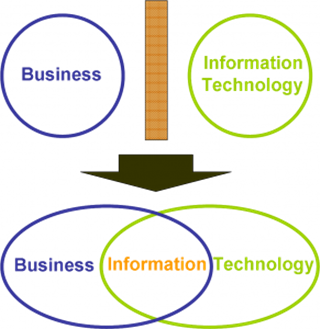The New Model Is Here: IT and Business Must Work Together

For decades now, business and IT have been perpetuating the Division of Labor model to get work done. There have been a lot of reasons for this but the reality in today's world is none of those reasons make sense. Five recurring themes that have developed over the years include:
1. Business doesn’t really know what they want, so IT should go away for a few months in a vacuum and figure it out for them.
2. Business can’t effectively communicate their needs, so IT should force them to spell it out with ridiculously excessive documentation and hold them accountable if they change their minds.
3. Business has forgotten all of the technology decisions they've made so IT should manage those conflicting cross-departmental business decisions.
4. There are so many cool things IT could do to help business – we should just do them and ask for forgiveness later.
5. Business has difficulty communicating with technology types so they put requirements together in a series of documents and throw it over the fence to IT and wait to see what they come up with.
In today's world, technology changes rapidly and permeates every aspect of business. So is it still valid to be looking at the Division of Labor model as the right one for a business and technology marriage?
The only truthful answer is NO. It just doesn't make sense anymore.
It’s simply impossible to know everything about your industry (let alone someone else’s) because of how quickly things change. In order to write high quality software that adds real value to the business, there must be an ongoing, collaborative exchange of specialist knowledge between IT and business.
Continually fostering environments where knowledge exchange is done face-to-face with cross-directional, open, honest, and valid feedback creates better software. We understand that this approach is new to many on the business side of the fence. But we also know that if business will work with us to get out of their comfort zone and dip their toes into the world of technology (and vice versa), then we open the door to a collaborative knowledge exchange that will undoubtedly result in both a rewarding experience and a sucessful software project.
Tell us what you think. What have your experiences been with IT? How do you think the process can be improved?
